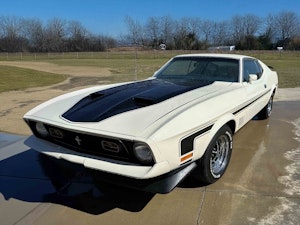Media | Articles
My Datsun Z Fuel Tank Replacement Came from an Unlikely Source
Classic vehicle owners have to be good detectives. If you don’t have an unlimited mechanic budget, you’ll often have to rely on elbow grease, intuition, and hours of research. Along the way, as you’re tracking down leads, you develop a long list of “inside sources,” who can help diagnose problems, suggest solutions, and source necessary parts.
Unfortunately, even Columbo couldn’t “one more thing” his way into locating vital automotive components that don’t exist. The best interrogation skills in the world can’t conjure up a no-longer-available suspension piece, and once every NOS part has been swiped from shelves, all possible paths lead to bupkis.
Indeed, when I first sought to replace the fuel tank on my 1978 Datsun 280Z in 2019, I came up empty. Given that the first-generation “S30” Datsun Z is such a popular and relatively affordable model, with production in the hundreds of thousands, I figured that such a vital piece of its fuel system would be relatively painless to find. After all, the aftermarket had stepped up in numerous other ways to help keep these rides on the road, so why would a gas tank be any different?

Silly me. I quickly discovered that nobody was making these parts new, leaving two options: have one custom fabricated at great expense (usually in the $3000 to $4000 range—about half what I paid for the entire car), or buy a used tank and hope for the best. The latter choice also required finding a local radiator shop still willing to clean and seal a tank, which in my neck of the woods (Québec) has become rarer than, well, S30-generation fuel tanks.
Given that my fuel issues weren’t yet urgent, I stuck with the devil I knew and continued to drive my car as-is, tolerating its strange tendency to spew gasoline from the filler cap when driven at higher RPM. (This, despite repeated attempts at remediating any ventilation issues.)
When Push Came to Shove
Things came to a head last summer, during a 2024 racing season from hell that culminated in a fuel starvation issue cutting short multiple track days. I eventually traced the issue back to my tank, which was full of rust—chunks of which were clogging the filtration screen inside the unit and starving the engine at higher speeds.

No longer able to ignore the situation, I resumed my search. A solution emerged: a Dutch-designed factory replacement fuel tank… for my classic Japanese car. Encoded within that unexpected sentence is the entire microcosm of how challenging parts support can be even for ultra-popular old school automobiles. To pull the trigger, or not to pull the trigger?

My Z is primarily a track car. You may be asking, “Why not install a fuel cell and call it a day?” The answer is a two-parter, starting with the fact that my Datsun’s hatchback design doesn’t offer any physical separation between its cargo compartment (where the cell would sit), and the passenger compartment (where I’d very much like to not be incinerated should I make a mistake at a high rate of speed).
Aside from the fact that few sanctioning bodies would allow the driver and fuel cell to share the same space, moving said cell below the load floor would require significant surgery. I’d rather not snip away corrosion-free survivor steel. That unwillingness to mangle my 280Z’s unibody also ruled out swapping in an OEM tank from another vehicle, as some owners have done using cut-to-fit Chevrolet Camaro reservoirs.
Picking up my search where I left off more than five years ago, after scouring my go-to Facebook groups and hitting up Datsun forums on the web in search of a decent stock tank, I discovered a trio of options.
Marketplace
Buy and sell classics with confidence
The Big-Money Tank
The first was that very same company I came across back in 2019, Pro Alloy, a U.K.-based fabricator willing to put together a built-to-order custom aluminum tank for the same lofty sum: $3000, plus shipping. That route might make sense for someone seeking a lightweight replacement tank produced to their exact specifications for a competition car, but for the vast majority of S30 Z owners, it’s overkill. You don’t hire an exorbitantly priced Hollywood personal trainer if all you want is to fit into an old pair of jeans.
The Semi-DIY Tank
Next up was a solution that seemed to tick a lot of attractive boxes. Vintage Tank Solutions offers a factory-style tank that’s made out of polyethylene, a strong but lightweight alternative to steel, at less than a third the cost of Pro Alloy’s offering. I was close to buying it when a frank conversation with an experienced fabricator convinced me to keep looking. His concern? The tank comes completely sealed, requiring you to cut your holes for installing lines, pumps, and ventilation.
How bad can it be, I asked my mechanic, who regularly installs custom, track-ready parts into a wide array of Porsches. “There’s no way to do this without worrying that one day it’s going to start leaking,” he told me. I trust him more than I trust my sealing abilities, so I walked away from that course of action.

S30 World to the Rescue
I was close to giving up when I stumbled across a Facebook post from a fellow Z owner. They mentioned a company called S30 World, which helped this owner locate a factory-correct steel tank at an extremely reasonable price: $625 (plus $165 shipping), which was priced below the polyethylene option.
One quick web search and I was looking at not just one-size-fits-all approach to the S30-generation Z—which would have been reasonable, given that the 240Z, 260Z, and 280Z all share the same dimensions—but a full catalogue of tanks, divided by production date, that encapsulated every first-generation model.
After a few emails back and forth, I was convinced that both the tank and their pricing was the real deal. (Another local Z owner here in Quebec also raved in an online post about his own S30 World tank that had just arrived, hassle-free, the week before.) I fired up the credit card and a couple weeks later had a replacement tank of my own.
Trans-Atlantic Assist

How had I never heard of S30 World? It turns out that they only recently got into producing parts for the Z, and in fact, exclusively manufacture fuel tanks and weather stripping. Oh, and this niche source of Japanese sports car parts is located in… the Netherlands? Huh?
I couldn’t believe that the final destination for my fuel tank odyssey ended not in Japan or on the California coast (home to many Datsun shops) but in Europe. I had to find out why S30 World took the perilous plunge into parts manufacturing, so I got on a transoceanic call with the company’s founder, Chris Visscher.
Visscher’s path to the Datsun parts market can be traced to his own frustration at being unable to find replacement tanks. He does high-end, period-specific Z restorations for customers under the S30 World banner, with meticulous mechanical details taking place at a facility in Buren, the Netherlands, and bodywork at a satellite shop in Budapest, Hungary. S30 World also operates a Datsun Z museum.
“The thing is, I don’t need to be a seller of parts,” Visscher said. “That’s not my objective. But nobody made tanks, so when I started making them, because we restore at a very high level of detail, I wanted to make sure there was a tank for every S30 variant there is. We could have covered it with three general designs, but we produce seven.”

What pushed him to expand beyond simply commissioning a batch of perfect replica tanks for his own restoration needs? Despite only needing perhaps 30 tanks a year at the shop, producing such low volumes wasn’t financially feasible.
“They cost a crazy amount of money [in small batches],” Visscher said. “So you need to produce hundreds a year, at least, to make it possible. We don’t ever want to compromise the originality of the cars we work on, so they have to be right.”
The extra inventory meant opening up an order book so that owners from around the world could take advantage of S30 World’s expertise, design, and development work. S30 World started the process with a 1970 240Z tank and then expanded from there.
At this point, roughly 65 percent of its sales are from North America. The outfit does not spend a single dollar on advertising.
“We’ve only used Facebook,” said Visscher. “Just having out page there, and being involved in the community, has been enough to sell our tanks.”

Anytime someone can fill a parts void for a popular classic vehicle with a well-engineered and affordable solution, word gets out. Owners are clamoring for parts like this, and they’re more than willing to pay a shipping premium to get them delivered.
Still, it’s worth noting that the savior here is not Nissan’s own parts division or an independent team in a country where these cars are plentiful (like the U.S.), but a small operation on a continent in which only 1000 examples of the S30 were sold between 1971 and 1978. That’s 0.001 percent of the 520,000 Datsun Zs produced globally during that period. It didn’t help that the S30’s purchase price in period was roughly equivalent to that of the Porsche 911.

How many Jeep owners are ordering tops from Japan or suspension kits from South America? I’m willing to wager that the answer to either question is “none,” but as these rides get older and older, there’s no telling when a once-reliable source of replacements will dry up.
I’m grateful I can keep my 47-year-old hunk of J-tin on the road and can only hope that this is a sign of a wave of interest in the Z. There are some enterprising individuals here in North America who are just as intent on keeping their straight-six humming; maybe this bright idea puts some fuel in their tank.






















That’s pretty neat. https://s30.world/ is the webpage.
That’s so cool, and amazing.
It must be a blast to connect with it at high speed, and affirming to know the beautifully-designed ‘vintage’ Z car has an enduring affection around the world.
When it was 1st revealed, I remember thinking: no other mass-production vehicle manufacturer offers anything this beautiful. Similar to my opinion of an early XKE, an early Z is one of a few balanced, original automotive shapes the designer ‘got right’, with no awkward contours at any viewing angle.
It’s a ton of fun to drive – the perfect balance of torque and weight, and it communicates eloquently.
“…does not spend a single dollar on advertising.”
With this very helpful article, they’ll never need to.
My 1971 240Z is in wonderful shape, originating from a well to do California couple. So I’m not in need of a fuel tank yet. BUT the 54 year old door rubber was dried out rotten. s30.world comes to the rescue with their just introduced reproduction of the factory style 2 piece door weather strip seals. I just got thru installing them after a through removal and cleaning of the original seal & adhesive. What a difference! NO more rattling of the doors as I drive! NO more whistles of air making it’s way thru the bad rubber seals! NO more slamming the doors to get them to close as I’ve heard from other one piece seal installs. THANK YOU s30.world !!
Looking overseas is a must for hard to find car parts. I wanted 13″ stainless steel trim rings (not plastic, not plated) for my ’81 Corolla. Moon Equipment in Japan was the only place I found them. Moon in the US does not carry them.
Old cars are a worldwide thing; I’m not surprised that your gas tank came from the Netherlands. A Swedish company called VP Auto parts has, or makes, almost everything for my Volvo 1800S, and they even have a distribution center in the USA. I think my replacement gas tank from them cost around $500.
Best of luck with your 280Z!